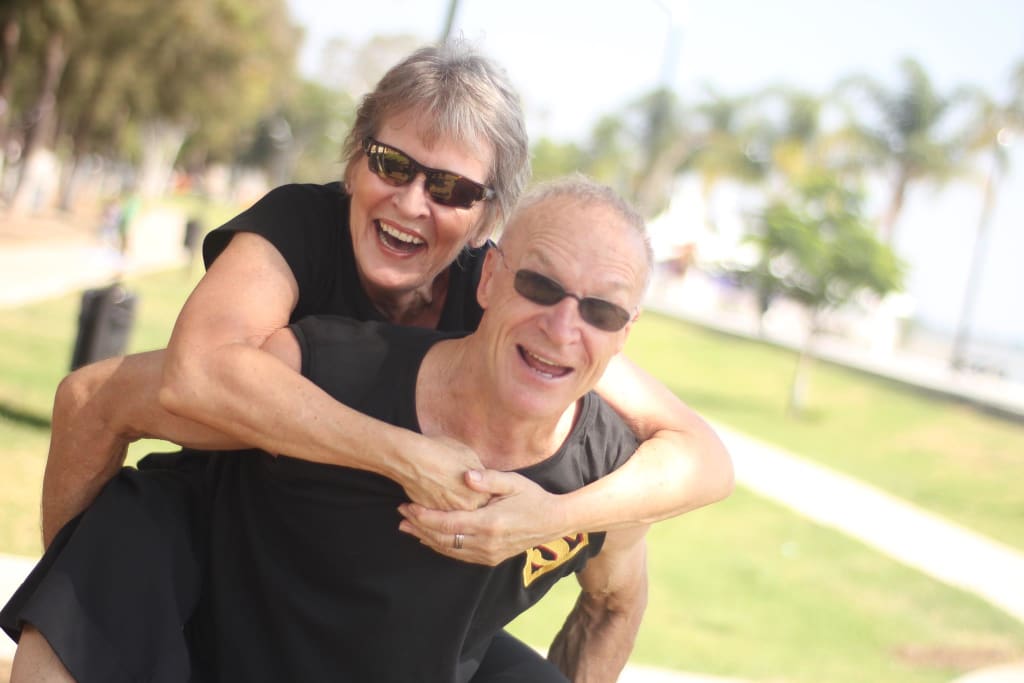Senior Fitness Guidelines for Healthy Individuals
Five Exercise Recommendations for Seniors

People are living longer and longer these days. The Center of Disease Control and Prevention reports that the life expectancy is at 78.7 years of age, according to a recent report.
This is due in large part to more medical advances and healthier lifestyles, which include regular exercise. For seniors, defined by the ACSM as people 65 or older, it’s imperative that they start or continue a structured fitness program as they journey into their golden years.
However, it’s important to follow certain rules and parameters when partaking in an exercise regimen to help ensure program retention and success, especially if you never exercised regularly or are returning after a long layoff.
Here are guidelines to follow to help you reach your goals safely. Note: Please consult a doctor before embarking on any exercise program.
Cardio
As far as cardiovascular fitness goes, walking is a great starting point, whether it’s on a treadmill or outside in a park. Three to four times a week at a comfortable pace for the first few weeks should suffice.
Adding in the recumbent bike (a bike with back support) as you move along will aid in the progression of your fitness goals, and may reduce the risk of injury to your back.
As you become fitter, you or a trained fitness or medical professional can monitor your heart rate in order to help you reach your next fitness level safely.
How to determine your Resting and Maximum Heart Rate:
When you first wake up in the morning, take your pulse on the inside of your wrist, on the thumb side.
Use the tips of your first two fingers (not your thumb) to press lightly over the blood vessels on your wrist. Count to ten, and multiply by 6. This is resting heart rate.
Your MHR is 220 – your age. For example: if you’re 65, then your MHR is 155 beats per minute (BPM).
Note: The below information is sourced from the American College of Sports Medicine (ACSM).
- Intensity by heart rate: Moderate (e.g., 40%-60% maximum heart rate [MHR] to vigorous (e.g., 60%-90% MHR) intensity aerobic exercise is recommended for most older adults, and light (e.g., 30%-40% HRR) to moderate intensity aerobic exercise can be beneficial in individuals who are deconditioned.
- Time: For moderate intensity physical activities, accumulate at least 30 or up to 60 (for greater benefit) minutes per day in sessions of at least 10 minutes each to total 150-300 min/week. Or at least 20-30 min/day of more vigorous intense physical activities to total 75-100 min/week or an equivalent combination of moderate and vigorous intense physical activity. Lower ranges are for adults who have not participated in any exercise program, or for frail individuals.
- Type: Any modality that does not inflict excessive orthopedic stress on the body, such as brisk walking. Aquatic exercise and stationary cycle exercise may be beneficial for those with limited tolerance for weight-bearing activity (running and aerobics).
Strength and Resistance Training
Seniors shouldn’t be afraid to engage in strength weight/resistance activities (weights, body-weight exercises and exercise bands). In fact, muscle strength declines significantly after age 50, at approximately 15 percent per decade, according to the ACSM. So it’s important to participate in a light resistance program at first, and gradually increase the weight/resistance as you become stronger.
- Frequency: 2 days/week.
- Intensity: Moderate intensity (i.e., 60%-70% one repetition maximum [1-RM]). Light intensity (i.e., 40%-50% 1-RM) for older adults beginning a resistance training program. When 1-RM is not measured, intensity can be prescribed between moderate (5-6 reps) and vigorous (7-8 reps) intensity on a difficultly scale of 0-10, meaning 0 as easy and 10 as extremely challenging.
- Type: Progressive weight-training/resistance program or body-weight exercises, such as pullups, chin-ups, pushups, and dips. In total, you should perform 8-10 exercises involving the major muscle groups, which includes 1 set of 10-15 repetitions each.
Flexibility
Flexibility in senior workout programs shouldn’t be ignored, as muscles, ligaments and tendons become tighter as you age, causing a decrease in range of motion. This is due, in part, to the water content of tendons, the cord-like tissues that connect muscles to bones decline as we get older. This makes the tissues stiffer and less able to tolerate stress.
- Frequency: 2 days/week, preferably before and after workouts.
- Intensity: Stretch to the point of feeling slight discomfort, not pain.
- Time: Hold stretch for 30-60 seconds, or for as long as you can.
- Type: Any type of flexibility activity that utilizes slow movements and moves into a static, sustained stretch, not the bouncing variety, which may cause injury.
About the Creator
Jerry Del Priore
Veteran print and digital Sports Writer-Reporter-Author who's covers high school, college and professional sports.
Additionally, I have a book, Running Through Roadblocks. Plus, Food Writer/Blogger experienced in venue write-ups and reviews.





Comments
There are no comments for this story
Be the first to respond and start the conversation.